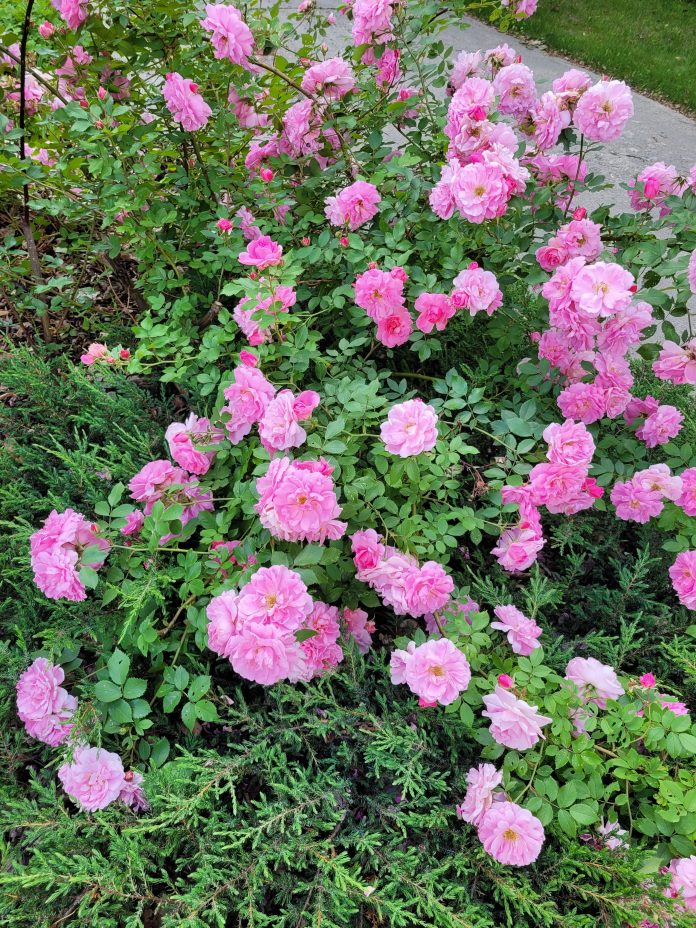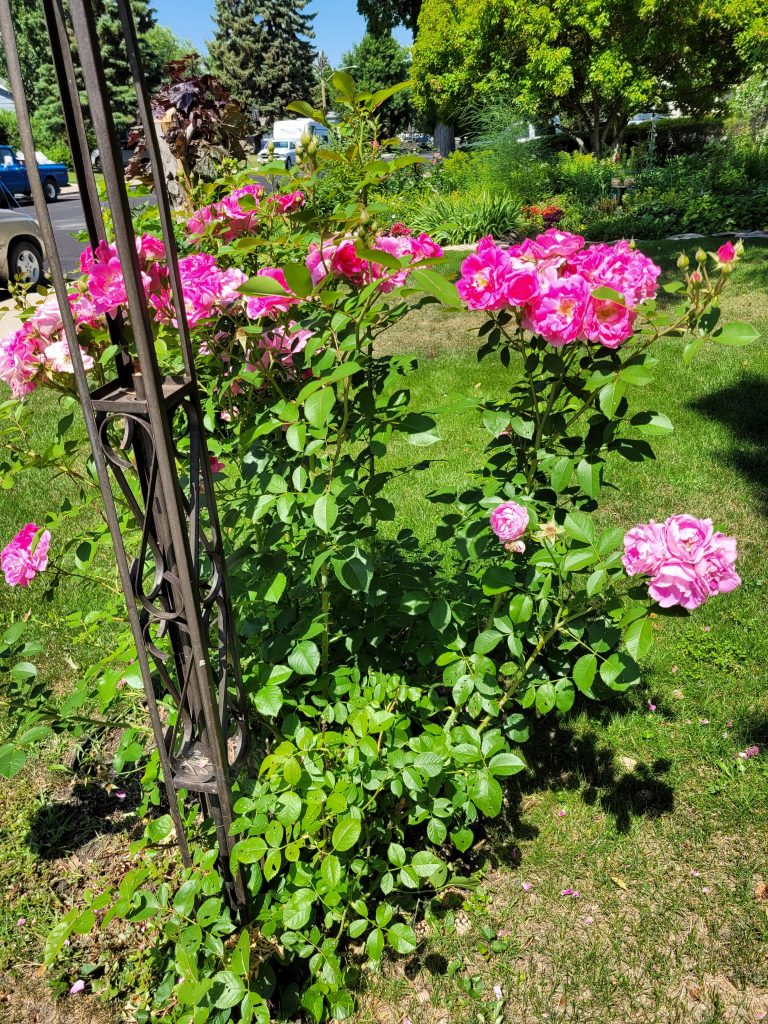
Bernadette Vangool, Saskatchewan Perennial Society
Along with healthy exercise, a daily walk around my neighbourhood provides an opportunity to meet the roses my neighbours are growing and to observe how they are faring from year to year. Among these are ‘Morden Centennial’, ‘John Cabot’, ‘John Davis’, ‘William Baffin’ and ‘Adelaide Hoodless’. Together, their namesakes represent four centuries of Canadian history. And planted in the right location and cared for properly with regular pruning, all are quite disease-resistant.
‘Morden Centennial,’ introduced by Henry Heard Marshall, commemorates the centennial of Morden, Manitoba. It has large, medium pink, double flowers. Though it often suffers some winter dieback, it quickly rebounds. Even though this rose drops its petals after blooming, it’s still a good idea to deadhead the rose clusters to promote repeat bloom. Stop deadheading in mid August to allow the rosehips to form and to signal the rose to enter dormancy.

‘John Cabot’ is a pillar or climbing rose, but can also be grown in Saskatchewan as a shrub rose. It produces sturdy canes that can be up to 1.5 meters tall with double, fuchsia-coloured flowers. It blooms heavily in the early summer and continues to bloom until fall. More fragrant than most hardy roses, it was the first climbing rose of the Explorer program developed in Ottawa by Felicitas Svejda. She named the rose after John Cabot, an Italian who sailed under the British flag and reached Newfoundland in 1497. ‘John Cabot’, is one of the best known Canadian roses. Felicitas Svejda recalled that in 1972 she had ordered a propagation field of roses to be ploughed to allow for new trials. She was approached by the tractor driver a while later for permission to work around the ‘John Cabot’ rose, as it was just too pretty to destroy.
‘John Davis’, another stunner and traffic stopper. is my favourite rose, probably because it graces my driveway and provides hours of enjoyment to me as well as my neighbours. It is covered with pink double blooms, slightly lighter in colour than ‘Morden Centennial’ and blooms profusely for about three weeks starting in the middle of June. It continues to bloom, albeit not as vigorously, until freeze up. It is named after the explorer, John Davis, who searched for, but never found, the North West passage between 1585 and 1587. It is a robust grower and shows the least winter dieback of all my roses.
‘William Baffin’ has deep pink (with a bit of white near the centre), semi-double flowers. (Semi-double flowers refer to roses with a petal count from 5 to 15. Double flowers have more than 15 petals.) Listed as a climber growing two to three meters in height, it becomes very full with large flower clusters. Considered one of the hardiest Explorer roses, it is best grown against a wall. It will need extensive pruning to train it to grow on a trellis. It is named after William Baffin, who sailed with Robert Bylot, and charted the coast of the largest island in Canada in 1615, today known as Baffin Island.
‘Adelaide Hoodless’, one of the Parkland roses, was introduced by Henry Heard Marshall. The clusters of dark red, smaller, but double flowers are stunning and very recognizable in the landscape. It is probably best grown in a more sheltered location. In spring, cut back the canes to 60 cm and remove some of them at ground level. This reduces the need to support the heavy flower clusters. ‘Adelaide Hoodless’ may have flower clusters of up to 25 roses, making it an excellent cut flower, as one single stem can make up an entire bouquet. It is named after the founder of the Women’s Institute of Canada in 1897.
Many of these roses are still available from nurseries and can bring years of enjoyment to the rose lovers in your family. Enjoy!
This column is provided courtesy of the Saskatchewan Perennial Society (SPS; saskperennial@hotmail.com). Check our website (www.saskperennial.ca) or Facebook page (www.facebook.com/saskperennial) for a list of upcoming gardening events.

